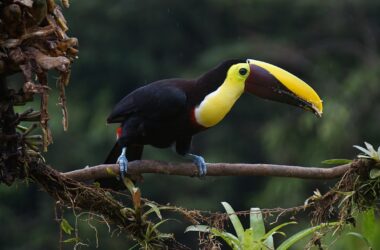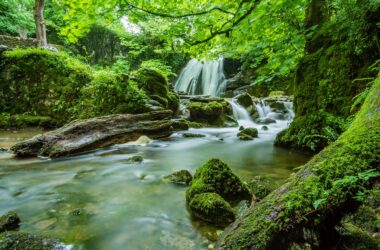Wildlife tourism offers the opportunity to explore the natural beauty and diversity of the world’s ecosystems and wildlife species. From observing majestic elephants in their natural habitats to exploring the underwater world of coral reefs, wildlife tourism provides an up-close and personal encounter with nature.
However, as wildlife tourism continues to grow, it is important to ensure that it is sustainable and does not harm the environment or wildlife species. Responsible wildlife tourism prioritizes the conservation and protection of wildlife and their habitats, while also providing a meaningful and enriching experience for travelers.
To ensure that a wildlife tourism experience is sustainable, travelers should choose tour operators and guides that prioritize conservation and responsible wildlife viewing practices. They can also support conservation efforts, such as supporting wildlife conservation organizations or participating in wildlife conservation programs.
Travelers can also reduce their impact on wildlife and the environment by avoiding activities that exploit or harm wildlife, such as elephant rides or visiting unethical wildlife attractions. Instead, they can opt for wildlife-friendly activities that promote conservation, such as wildlife watching or nature photography.
Wildlife tourism can also provide numerous benefits for local communities, including job creation and economic development. By supporting local businesses, travelers can help to preserve the cultural heritage of local communities, while also learning about their traditions and way of life.
In conclusion, wildlife tourism offers the opportunity to explore the natural beauty and diversity of the world’s ecosystems and wildlife species. However, it is important to ensure that it is sustainable and does not harm the environment or wildlife species. By choosing responsible tour operators and supporting conservation efforts, travelers can make a positive impact and experience the beauty of nature.
Similar Articles
Adventure Tourism: Exploring the Thrills of the Great Outdoors
Ecotourism: Sustainable Way to Explore the Beauty of Nature
Frequently Asked Questions About Wildlife Tourism
Q. What is wildlife tourism?
A – Wildlife tourism is a type of travel that focuses on exploring and observing wildlife species and their habitats in their natural environment. It provides travelers with an up-close and personal encounter with nature.
Q. Why is wildlife tourism important?
A – Wildlife tourism is important because it helps to raise awareness and support for wildlife conservation and protection. It also provides travelers with the opportunity to connect with nature and learn about different wildlife species and their habitats.
Q. How can travelers ensure that their wildlife tourism experience is sustainable?
A – Travelers can ensure that their wildlife tourism experience is sustainable by choosing tour operators and guides that prioritize conservation and responsible wildlife viewing practices. They can also support conservation efforts, such as supporting wildlife conservation organizations or participating in wildlife conservation programs.
Q. What are some ways to reduce the impact of wildlife tourism on the environment and wildlife species?
A – Travelers can reduce the impact of wildlife tourism on the environment and wildlife species by avoiding activities that exploit or harm wildlife, such as elephant rides or visiting unethical wildlife attractions. Instead, they can opt for wildlife-friendly activities that promote conservation, such as wildlife watching or nature photography.
Q. How does wildlife tourism benefit local communities?
A – Wildlife tourism can benefit local communities by creating jobs and promoting economic development. By supporting local businesses, travelers can help to preserve the cultural heritage of local communities, while also learning about their traditions and way of life.
Q. Is wildlife tourism safe for both travelers and wildlife species?
A – The safety of wildlife tourism depends on the tour operator, the type of activity, and the location. Responsible tour operators prioritize the safety of both travelers and wildlife species, while ensuring that activities do not harm the environment or wildlife species.
Q. How can travelers make a positive impact during their wildlife tourism experience?
A – Travelers can make a positive impact during their wildlife tourism experience by supporting conservation efforts, such as supporting wildlife conservation organizations or participating in wildlife conservation programs. They can also reduce their impact on the environment and wildlife species by avoiding activities that exploit or harm wildlife and choosing wildlife-friendly activities.
Q. What are some popular wildlife tourism destinations?
A – Some popular wildlife tourism destinations include national parks, wildlife reserves, and wildlife sanctuaries, such as the Serengeti National Park in Tanzania, the Amazon Rainforest in South America, and the Galapagos Islands in Ecuador.











Thank you for your sharing. I am worried that I lack creative ideas. It is your article that makes me full of hope. Thank you. But, I have a question, can you help me?
Thank you for your sharing. I am worried that I lack creative ideas. It is your article that makes me full of hope. Thank you. But, I have a question, can you help me?
I appreciate you sharing this blog post. Thanks Again. Cool.